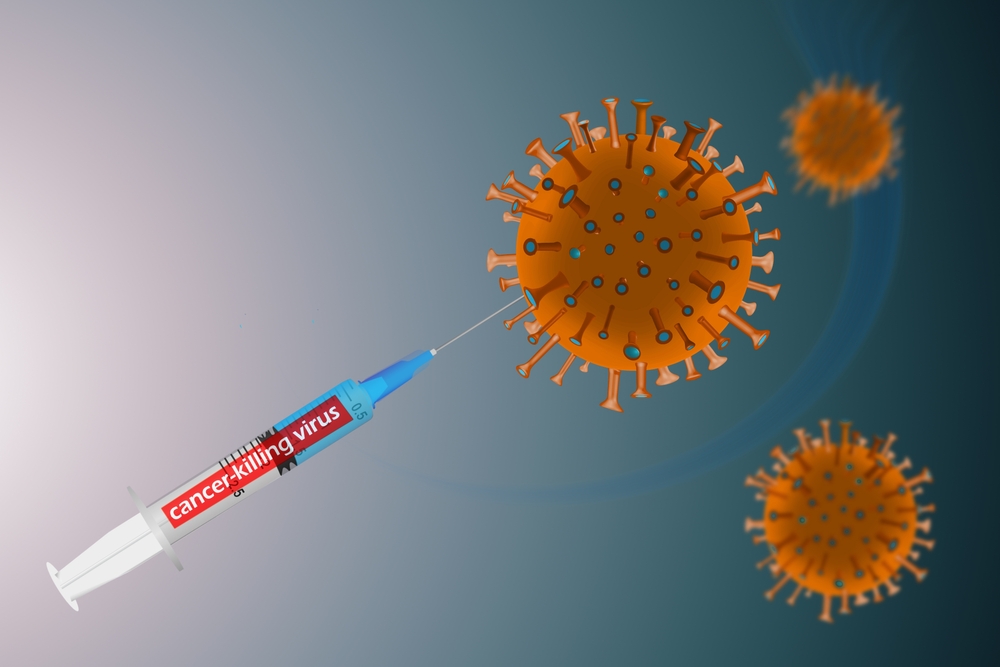New mRNA Shot Turns Immune Cells Into Cancer-Killers Directly Inside the Body, Study Finds

What if healing cancer didn’t start in a lab, but inside your own body?
Not with surgery. Not with radiation. But with a microscopic message that teaches your immune system how to fight and win.
For decades, we’ve imagined the immune system as a defense force. But now, scientists are turning it into an elite strike team, retrained on the battlefield. Thanks to the same mRNA technology that powered COVID-19 vaccines, researchers are pioneering a method that transforms ordinary immune cells into precision cancer-killers inside the body itself.
This shift could change everything. It could remove the need for expensive lab-manipulated cell therapies and replace them with a shot that rewrites the body’s instructions on how to destroy cancer.
It’s not the future. It’s happening now.
A New Chapter in Cancer Healing
The Stanford-led study marks a profound shift in how cancer might be treated in the near future not with external lab-made solutions, but by instructing the body to become its own cure. Using lipid nanoparticles, researchers delivered carefully encoded mRNA into mice, guiding their T cells to transform into CAR-T cells from within. No lab extractions. No weeks of waiting. No preconditioning chemotherapy. Just a cellular message delivered directly into the bloodstream, setting off a cascade of healing.
The results were striking: in mice with B cell lymphoma, multiple doses led to complete tumor eradication in 75% of cases. Importantly, the treatment showed no signs of toxicity even after 18 rounds of injections. And unlike traditional CAR-T therapy, this method can be repeated, potentially boosting effectiveness over time.

This technique mirrors the success of mRNA vaccines, which work by teaching the body’s cells to create a harmless piece of a virus, triggering an immune response. But here, the message is more advanced. The mRNA doesn’t just train immune recognition it reprograms immune behavior, instructing cells to seek and destroy a specific cancer target, such as the CD19 protein common in B cell malignancies.
What makes this even more groundbreaking is the integration of real-time tracking. By adding a second mRNA encoding a PET-visible marker, scientists could watch the modified cells move through the body, homing in on tumors. This transparency not only improves safety but also offers a way to refine and adjust the therapy as needed a level of insight rarely seen in cancer treatment.
This is not just about medical advancement it’s about access. By removing the need for personalized, labor-intensive cell manufacturing, in situ mRNA therapy has the potential to democratize cancer treatment. A shot that reprograms the immune system could one day be administered in local clinics, not just elite cancer centers.
A Game-Changer with Limits

Messenger RNA has already proven its potential on a global scale. The rapid development of COVID-19 vaccines demonstrated how mRNA could be used to program cells to recognize and respond to specific biological threats. But cancer is a more elusive enemy one that hides in plain sight, mutating and mimicking healthy tissue to escape detection. That’s why researchers have spent years refining how mRNA can be used not just to spark an immune response, but to build a personalized army against cancer itself.
Early trials have made it clear: this technology is a game-changer. But even the most promising breakthroughs come with boundaries.
One approach currently being explored involves designing personalized mRNA vaccines based on the unique genetic mutations found in a patient’s tumor. At MD Anderson Cancer Center, for instance, colorectal cancer patients are receiving custom-built vaccines developed from tissue removed during surgery. Scientists identify tumor-specific mutations and encode those into mRNA, prompting the immune system to hunt down and eliminate residual cancer cells. It’s a highly targeted and individualized therapy—precision medicine at its peak.
Yet this precision comes at a price. Personalized mRNA vaccines are complex, expensive, and time-consuming to produce. Each patient requires a unique formulation, which means delays between diagnosis and treatment. And while early results are encouraging, the scale and practicality of delivering this level of customization to every cancer patient remains a formidable challenge.
In contrast, the Stanford in situ CAR-T method offers something radically different: a broad, scalable, and repeatable process that uses off-the-shelf components to trigger a similarly personalized effect. Instead of crafting a unique vaccine for every patient, the treatment delivers a universal message that generates tumor-targeting cells within the body, tuned to seek out markers like CD19 proteins that are common across many B-cell cancers.
Still, this method too has its boundaries. So far, it’s only been tested in mice. Human trials remain a necessary next step, particularly to evaluate safety, efficacy, and long-term immune responses in more complex biological systems. Solid tumors also present a greater challenge than blood cancers due to their dense structure and immune-resistant environments. And while PET imaging offers a promising way to track the modified cells, ensuring they don’t affect healthy tissues is a concern that must be carefully monitored.
mRNA Reprogramming Inside the Body

At the core of this innovation is a simple concept with powerful implications: instead of engineering immune cells outside the body, instruct them directly within. The Stanford research team did just that by using lipid nanoparticles to carry mRNA that encodes two crucial elements one to turn T cells into cancer-seeking weapons, and another to make them visible through medical imaging. These nanoparticles are coated with antibodies that bind specifically to T cells, ensuring the message goes exactly where it’s needed.
Once the nanoparticles are injected, they seek out T cells, fuse with them, and release the mRNA. Inside the T cells, the mRNA is translated into proteins, reprogramming the cells into CAR-Ts that target CD19, a protein commonly found on cancerous B cells. These transformed cells then go on the attack, seeking out and destroying cancer cells.
This process mirrors the natural programming of cells, but with a new set of instructions—a biological rewrite happening in real time. In mouse models, it led to the production of millions of CAR-T cells per animal, matching the levels achieved through traditional, lab-based CAR-T therapy. More importantly, the treatment bypassed the need to wipe out a patient’s existing immune cells beforehand, a step that normally increases the risk of infections and complications.
Beyond its elegance, this method solves key delivery problems that have plagued earlier mRNA therapies. Naked mRNA degrades quickly in the body, and its size and charge make it difficult to cross cellular barriers. Lipid nanoparticles already proven in COVID-19 vaccines—protect the mRNA, transport it into the target cells, and enable its release in the cytoplasm, where protein synthesis begins.
Another advantage lies in its adaptability. Unlike DNA-based therapies, mRNA does not integrate into the genome, meaning its effects are temporary and controllable. This makes repeated dosing possible—essential for boosting immune response over time without risking long-term genetic disruption.
The researchers also included imaging tags in the mRNA to monitor the distribution and activity of the modified cells using PET scans. This not only confirms that the therapy is working, but also provides a way to catch early signs of off-target activity a crucial safety checkpoint.
What This Could Mean for Cancer Treatment

At its core, this method removes many of the bottlenecks that have restricted advanced therapies to the few. Traditional CAR-T cell therapy, while effective, remains confined to specialized centers due to its complexity and cost. But an injectable mRNA-based alternative delivered in a clinical setting without surgical intervention could be widely distributed, even to regions with limited resources. This would dramatically expand global access to potentially curative cancer treatments.
It also opens the door to more dynamic and adaptive therapies. Because mRNA does not alter the patient’s DNA and is metabolized quickly, repeat dosing becomes possible. Each new dose could reinforce or even modify the immune response as needed, offering a level of control that current one-time cell therapies cannot match.
Importantly, this strategy aligns with the broader evolution of cancer treatment toward personalization. While some mRNA cancer vaccines are designed using a patient’s unique tumor mutations, the in situ CAR-T method could provide a hybrid approach targeting common antigens like CD19 while adapting delivery protocols to individual patient needs. It balances precision with scalability.
Beyond blood cancers, researchers are now exploring whether this platform could finally tackle solid tumors a longstanding challenge in oncology. Because solid tumors create physical and chemical barriers that blunt immune responses, past therapies have struggled to penetrate and persist. But the flexibility of mRNA, especially when paired with imaging and tracking tools, could help overcome these barriers. By monitoring how reprogrammed cells behave in real time, doctors could adjust dosage or delivery methods to ensure tumors are properly infiltrated.
There’s also promise in combining this approach with other immune-enhancing therapies—such as checkpoint inhibitors or ISV (in situ vaccination) protocols—to amplify results. In fact, most ongoing mRNA cancer trials now include these kinds of combinations, aiming to multiply their impact and reduce the chance of relapse.
The Science Behind the Shot

At the molecular level, mRNA therapy is a symphony of precision engineering, biological intuition, and chemical innovation. While the concept may seem complex, the science behind it is both elegant and profoundly logical: send the body a message it can read and trust and it will do the rest.
What is mRNA, really?
Messenger RNA (mRNA) is a temporary set of instructions cells use to build proteins. It carries a blueprint from DNA to the cell’s protein-making machinery. In mRNA-based vaccines and therapies, scientists design synthetic mRNA strands that encode a specific protein the body needs to recognize either to defend against (in the case of viruses) or to destroy (in the case of cancer).
Unlike DNA therapies, mRNA does not enter the nucleus or alter the genetic code. It remains in the cytoplasm, performs its task, and then degrades naturally. This temporary nature makes it both powerful and safe. As Dr. Van Morris at MD Anderson explains, these synthetic messages are “recognized by the immune system as foreign,” triggering a cascade of immune responses that seek out other cells presenting the same abnormal proteins.
The role of lipid nanoparticles (LNPs)
Naked mRNA cannot survive long in the body; it’s fragile and quickly degraded by enzymes. Enter lipid nanoparticles tiny, protective fat-based spheres that shield the mRNA and deliver it safely to targeted cells. LNPs not only protect the mRNA but also help it enter cells, release its payload, and minimize unwanted immune reactions.
In the Stanford study, the LNPs were engineered with extraordinary precision. Researchers included antibodies on the surface that latch onto a protein called CD5, found on T cells. This targeting ensures the mRNA is delivered specifically to the right type of immune cell. Once inside, the mRNA gets to work programming the T cell to express a chimeric antigen receptor (CAR) that allows it to recognize and attack cancer cells expressing CD19.
Tracking the therapy in real time
One of the study’s most innovative features was its use of dual mRNA encoding: one for the therapeutic receptor and another for a protein that allows scientists to track the modified cells using PET scans. This level of visibility is rare in cancer treatments and could be key to refining therapy protocols, ensuring safety, and preventing off-target effects.
Built-in safety and adaptability
Because mRNA therapies are non-integrating and degrade over time, they carry a significantly lower risk of long-term side effects compared to gene-editing techniques. Researchers can also tweak mRNA sequences, optimize untranslated regions (UTRs), and adjust poly(A) tail lengths to improve translation efficiency and reduce immune overstimulation.
Even more advanced are self-amplifying mRNA (SAM) constructs, which include viral replicase genes to multiply their message inside the cell, producing more antigen with less starting material. Though not used in the Stanford trial, SAM platforms are under active investigation and may represent the next evolution of mRNA-based immunotherapy.
Obstacles and Opportunities

Every scientific breakthrough carries with it a double edge promise and pressure, potential and limitation. As mRNA-based cancer immunotherapies move from lab benches to clinical trials, it’s important to face the road ahead with both clarity and cautious optimism.
The challenge of scaling innovation
While reprogramming immune cells inside the body is a remarkable achievement, translating that into safe, scalable human therapies is no small task. The Stanford study’s success in mice is an encouraging proof of concept, but human biology is more complex. Tumors in humans are more heterogeneous, often protected by dense environments that make them harder to infiltrate. Dosage, delivery precision, and long-term effects must all be rigorously studied before these therapies can become mainstream.
Moreover, while mRNA vaccines are easier to produce than traditional biologics, the infrastructure required to manufacture personalized or semi-personalized mRNA therapeutics at scale still needs to be strengthened. Handling, transport, and storage especially for lipid nanoparticle formulations—require cold-chain logistics and stability safeguards that not all healthcare systems currently possess.
Solid tumors remain a hurdle
CAR-T therapy has shown powerful results in blood cancers, but solid tumors like those in the lung, breast, or colon—have remained more resistant. Their microenvironments often suppress immune activity, and physical barriers can prevent immune cells from reaching the tumor core. Researchers are now exploring whether repeated in situ mRNA doses, possibly in combination with checkpoint inhibitors or radiotherapy, can overcome these defenses. It’s a challenge, but not an impossible one.
Precision comes with risks
Targeting T cells with mRNA-encoded receptors must be accurate. Off-target effects—where engineered cells attack healthy tissues remain a critical concern. That’s why the ability to track modified T cells using PET imaging, as demonstrated in the Stanford study, is a vital safety feature. Still, real-time monitoring in humans must be validated, and protocols for managing unintended immune reactions need to be developed alongside the therapy itself.
The opportunity to democratize treatment
Despite these challenges, the potential benefits are enormous. Traditional CAR-T therapy is labor-intensive, expensive, and geographically limited. In-body mRNA-based immunotherapy could lower costs dramatically, shorten treatment times, and extend access to underserved populations. In the long run, this approach could bring precision cancer therapy out of elite cancer centers and into everyday clinics around the world.
Commercial interest and collaboration
Biotech startups and research institutions are increasingly investing in mRNA cancer therapies. Companies like TwoStep Therapeutics are developing tumor-targeted delivery systems that bypass the need for direct injection into tumors a current logistical challenge in in situ vaccination protocols. Meanwhile, institutions like MD Anderson and Genentech are testing mRNA therapies in combination with ctDNA screening, checkpoint inhibitors, and immune modulators.
Healing from the Inside Out
We often imagine healing as something that comes from the outside a pill, a surgeon’s blade, a beam of radiation. But the next generation of cancer therapy is telling us something different. It’s saying: the most powerful medicine might already be inside you.
This is more than technology. It’s a shift in how we understand the body not as something broken that needs to be fixed, but as something intelligent that can be re-taught to protect itself. Messenger RNA doesn’t impose change. It delivers information. It reminds the body what to fight, and how to fight it.
That’s a subtle, but radical idea.
For patients and families navigating the darkness of a cancer diagnosis, this approach offers more than just treatment. It offers dignity. It offers speed. It offers access. A future where cancer therapy isn’t just for the fortunate few, but for anyone with a body and a will to survive.
The science is still evolving, and challenges remain. But we are witnessing something profound: the convergence of biology, data, and design into a language that our cells can understand. A language that doesn’t just treat disease but rewrites the story entirely.
Not by conquering the body. But by partnering with it.
And maybe that’s the most human kind of healing there is.
Loading...

